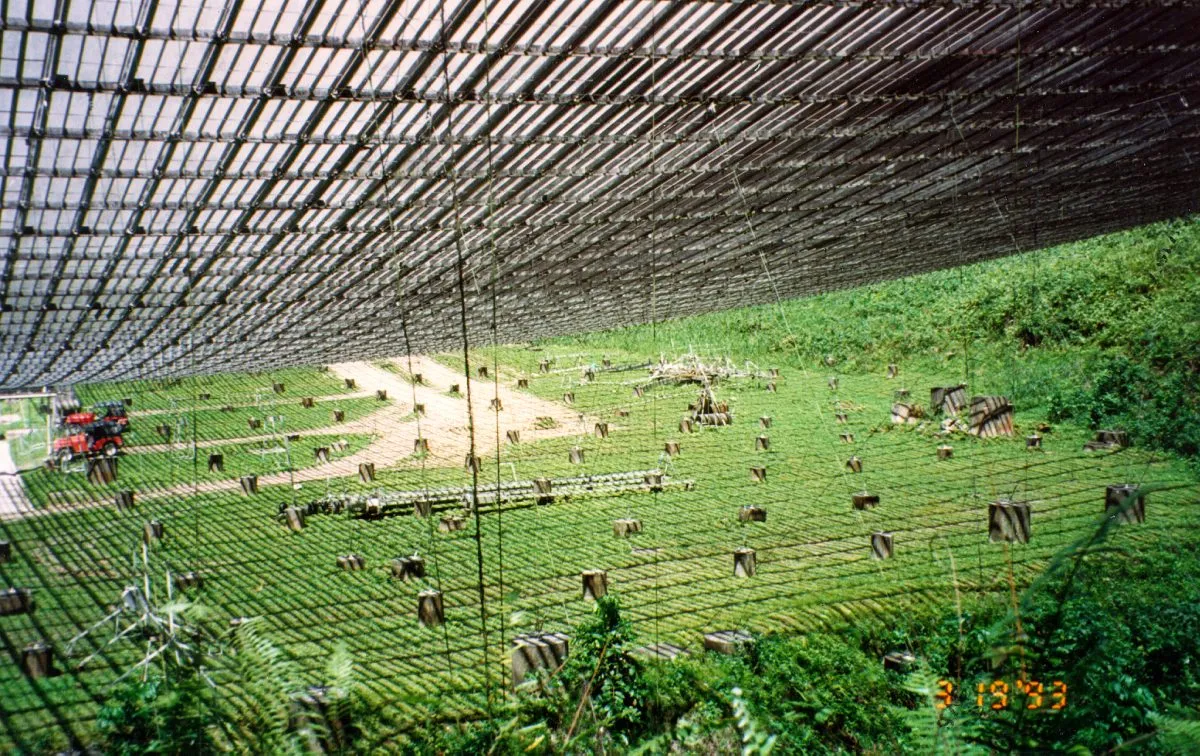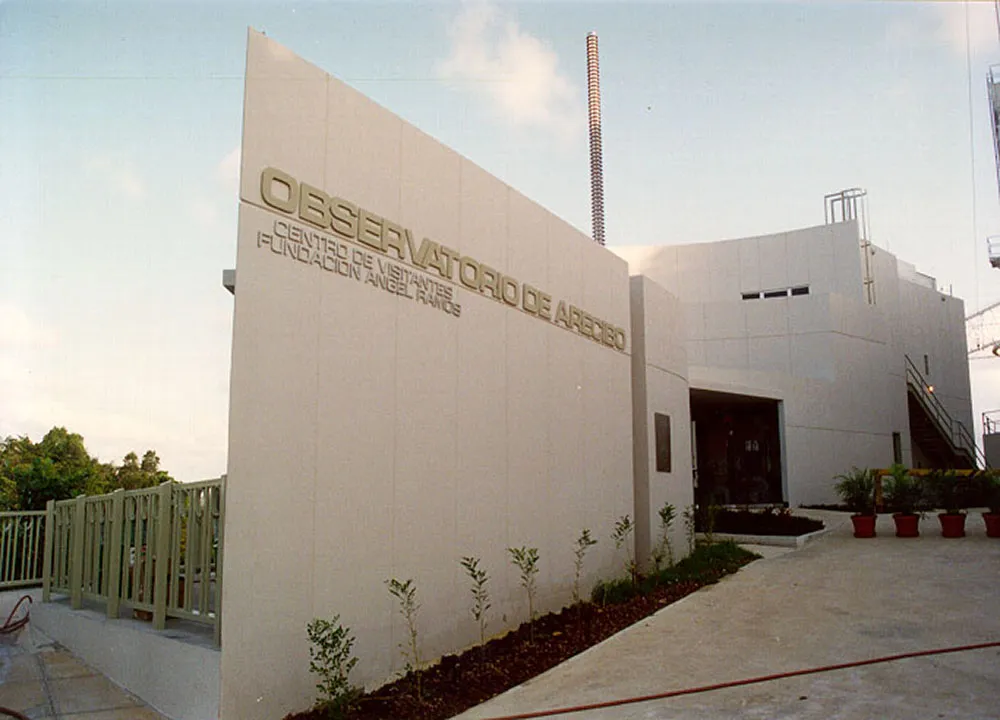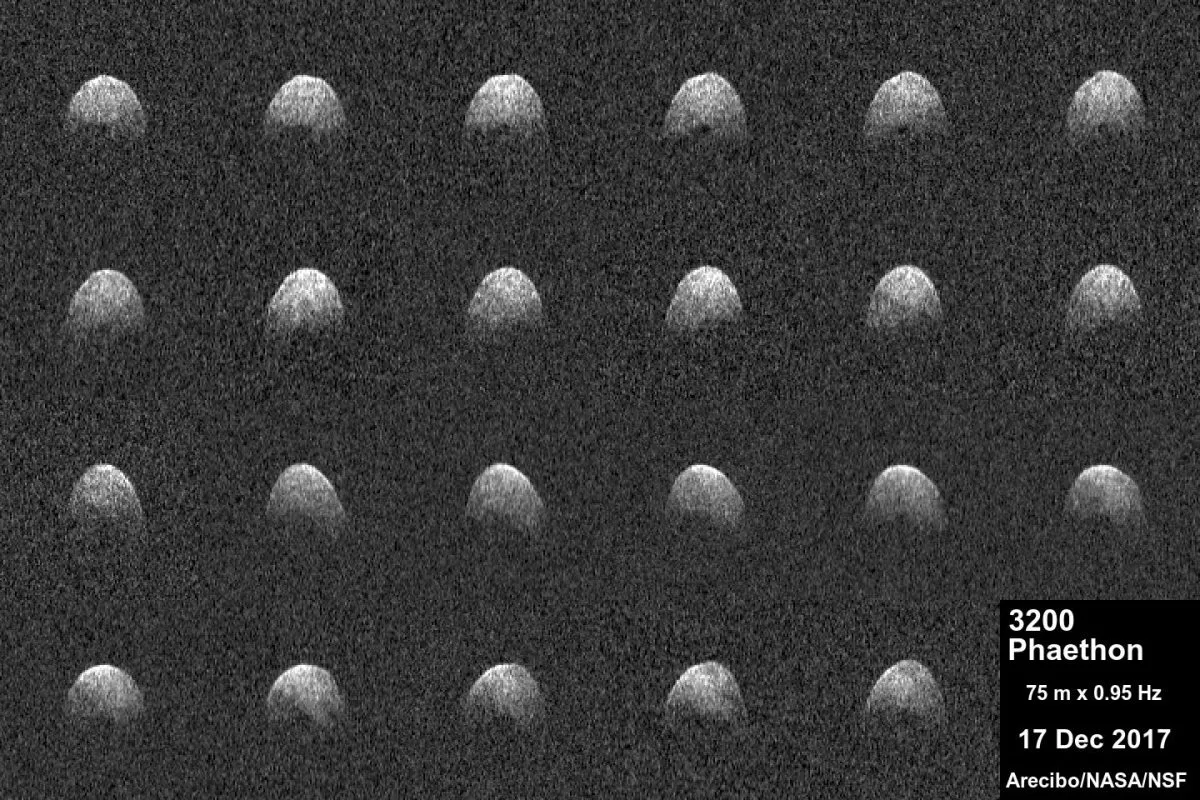The world-famous Arecibo Observatory 305m radio telescope is under threat of being decommissioned after 57 years of observing the Universe, according to the National Science Foundation.
The news follows a review of the Arecibo structure that found it could not be stabilised without risking the safety of construction workers at the facility.
The Arecibo Observatory, located in Puerto Rico, consists of a 305m-wide radio dish with a 900-ton platform hanging 450 feet above ground, and suspended by cables connected to 3 towers.
Engineers at the site have been assessing the integrity and safety of the structure since one of its support cables detached on 10 August 2020, leaving a 100-foot hole in the dish below.

The University of Central Florida, which manages the Arecibo Observatory, was authorised by NSF to remedy the fault.
However, while awaiting the delivery of 2 replacement auxiliary cables and 2 temporary cables that would have stabilised the structure, on 6 November 2020 a main cable broke on the same tower. Engineers then concluded that the existing cables were weaker than originally thought.
The decommissioning schedule at Arecibo will focus only on the 305m telescope itself and will preserve other parts of the observatory, say NSF.
Part of the decommissioning plan is to retain remaining sections of the Arecibo facility and preserve them for future research and educational outreach.
It will also involve the use of drones to conduct a photographic survey of the site, so that engineers can discern whether more of the site may be preserved based on new evidence.
Once the decommissioning process is complete, NSF officials say they intend to restore operations at other parts of the observatory, such as the Arecibo Observatory LIDAR (Light Detection and Ranging) facility, the visitor centre and the Culebra facility, which analyses cloud cover and precipitation.

Arecibo Observatory's legacy
The Arecibo Observatory may be most well-known to the general public due to its appearance in the 1995 James Bond film Goldeneye, starring Pierce Brosnan as 007, but for astronomers it is a prolific instrument for radio astronomy that's been revealing the secrets of the cosmos for decades, studying a range of objects including planets, comets and asteroids.
Its radio vision enables it to peer beyond what can be seen by the naked eye, through interstellar cosmic dust and into far corners of the Universe to get a closer look at deep-sky objects such as pulsars, quasars and galaxies.
Arecibo has also conducted studies of the planets in our Solar System, collecting data on Mercury, Venus, Saturn’s rings and Jupiter’s moons.

"Over its lifetime, Arecibo Observatory has helped transform our understanding of the ionosphere, showing us how density, composition and other factors interact to shape this critical region where Earth’s atmosphere meets space," says Michael Wiltberger, head of NSF's Geospace Section.
"While I am disappointed by the loss of investigative capabilities, I believe this process is a necessary step to preserve the research community's ability to use Arecibo Observatory's other assets and hopefully ensure that important work can continue at the facility."

"Leadership at Arecibo Observatory and UCF did a commendable job addressing this situation, acting quickly and pursuing every possible option to save this incredible instrument," says Ralph Gaume, director of NSF's Division of Astronomical Sciences.
"Until these assessments came in, our question was not if the observatory should be repaired but how. But in the end, a preponderance of data showed that we simply could not do this safely. And that is a line we cannot cross."
For more information, visit the National Science Foundation website or the Arecibo Observatory website. You can also keep up to date with this story by following both on Twitter, at @NSF and @NAICobservatory.
